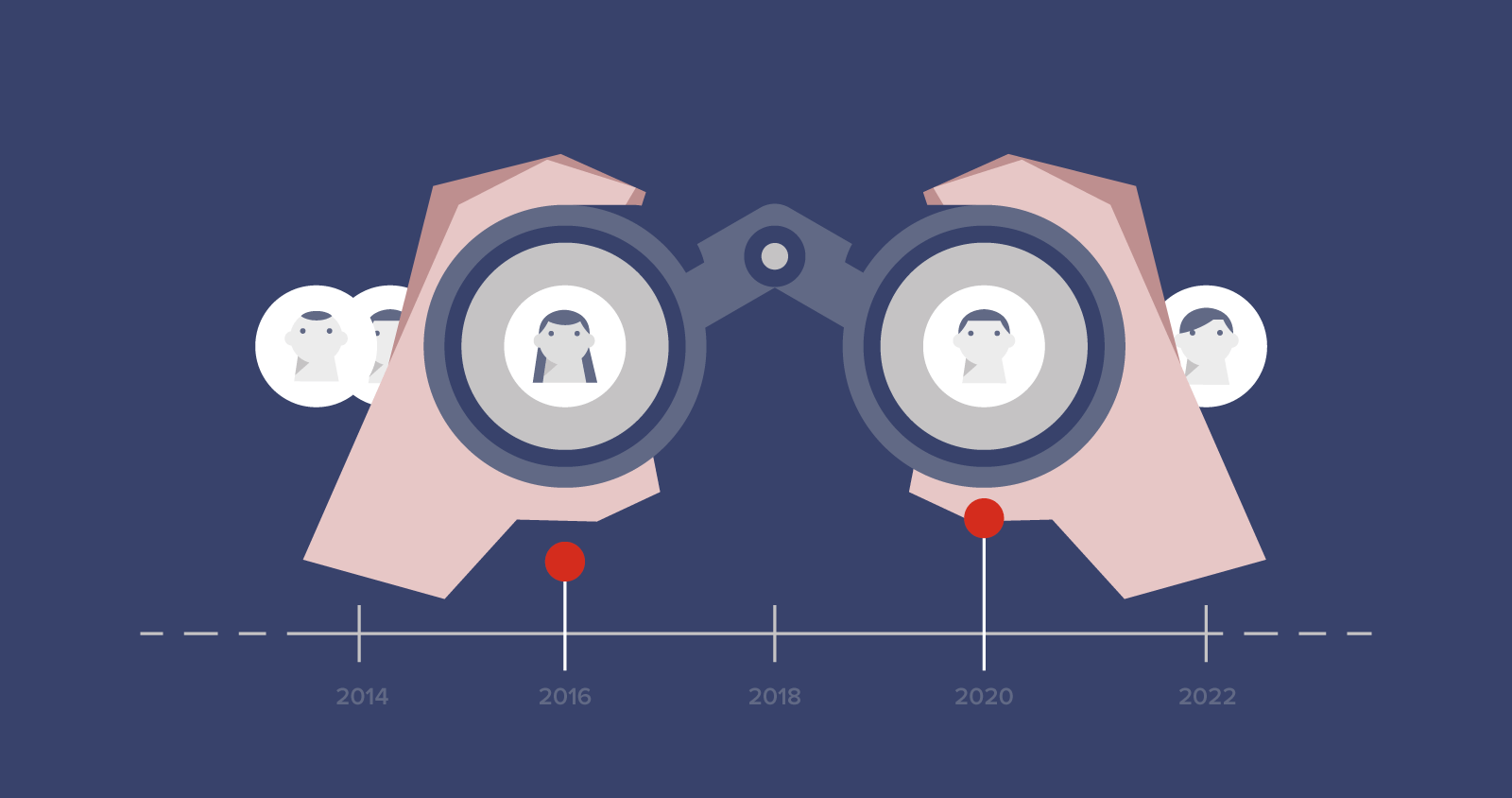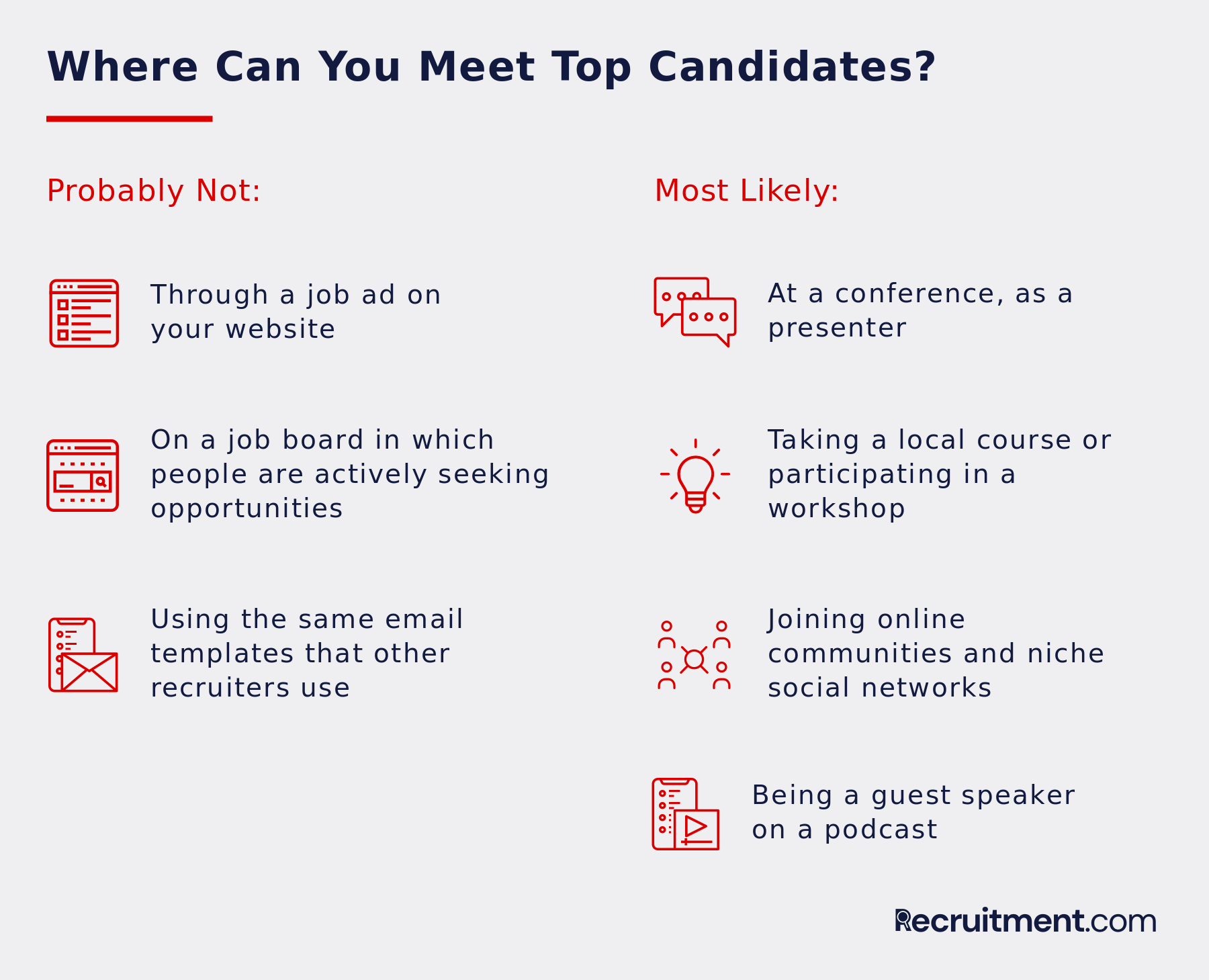Online Recruitment: What The Last Decade Can Teach Us About The Future

Ritika Puri has written for LinkedIn, Twitter, PNC, Forbes, Entrepreneur, and more. She also advises on HR and communications strategies.
Are you using your recruiting tech to its full strategic advantage? That’s a tough question, which requires a look into the past before jumping into the future.
Twenty years into the 21st century, everything that humans touch turns to data. As The Economist explains, this infinite pipeline of data will surpass the value of oil as the world’s most valuable resource.
As a result, “innovation” is no longer an experiment or buzzword—it’s the new normal. The pace at which technology is evolving is happening faster than the human mind can comprehend.
According to the World Economic Forum (WEF), these shifts are symptoms of a Fourth Industrial Revolution, in which humans are connecting with each other in never-before-seen ways.
“We stand on the brink of a technological revolution that will fundamentally alter the way we live, work, and relate to one another,” writes Klaus Schwab, founder and executive chairman at the World Economic Forum.
“We do not yet know just how it will unfold, but one thing is clear: the response to it must be integrated and comprehensive, involving all stakeholders of the global polity, from the public and private sectors to academia and civil society.”
Then And Now: What We Can Learn From The Past 10 Years
These macro-economic trends trickle down into how companies hire. As the needs of organizations change, WEF’s Future of Jobs report says that the most in-demand skills include people skills, analytical thinking, active learning, judgment, and the ability to make decisions. With these capabilities, every hire has the potential to steer an organization in new directions, across unknown terrain.
But finding “that person” isn’t exactly easy given the sheer number of options that recruiters have for sourcing candidates. Especially with the rise in remote work cultures, the right hires for your organization may be on the other side of the world.

Every person is unique—as is every role. The opening for which you hire today may change in six months, and the last thing your company needs is to hire a person who would rather jump ship than adapt to changing needs.
Hiring has become an intricate chess game.
Recruiting isn’t just about finding people who can accomplish tasks—it’s about finding people with a high degree of adaptability, creativity, and emotional intelligence to respond to ever-changing business priorities and constraints.
These are individuals who care about the long-term success of your company. They are also like to be in the minority of the global population that is highly engaged at work.
Technology & Your Recruiting Tech Stack
Most likely, your company uses a mix of technology: such as an applicant tracking system (ATS) as well as third-party platforms to source the people you need.
You might even have a database of candidates to whom you send emails on a regular basis. With access to LinkedIn and third-party data providers, it’s possible to connect with anyone in the world. But “anyone” isn’t “someone”—and it’s tough to find “someone” when you’re in a sea of communication with “everyone.”
This is one of the biggest complaints that recruiters have today. Technology, while opening candidate pools, has made it easy for top talent to fall through the cracks—and for companies to build funnels that attract job seekers who will not be matches.
Online job boards, in part, have contributed to this pattern of sourcing fatigue. What the last 10 years have taught recruiters that broad-based targeting has its role—to widen your funnel in meeting candidates who are beyond your first and second degree hiring networks. You never know who’s out there, ready to meet you, but you likely have to sift through a lot of applications as a tradeoff.
In 2014, Jobvite conducted a survey and found that job boards (43%) and career sites (34%) are the largest sources of applications but fall short in delivering the highest quality hires. But a lot has changed since 2014.
For one, algorithms are sophisticated, and advertising networks have evolved to identify people across websites and devices. Couple this data with on-site personalization capabilities—through a retargeting campaign—and job boards, aggregators of data, have the potential to become
There’s also a rising trend among people in business to join online communities. As a monetization model, these groups feature job boards.
For instance, Tech Ladies maintains a job board to connect companies with women technical talent. Other professional groups—like IT and engineering professionals—maintain job boards like Stack Overflow, GitHub, Jobs for DevOps, and Honeypot.

There are also invitation-only communities on Slack and Facebook for professionals in marketing roles. This perspective represents a continuum of a trend that Cameron Brain, CEO of EveryoneSocial pointed out back in 2018 based on data that he has observed across his platform.
“For the seasoned pros–those [who already use LinkedIn and other social networks for professional purposes] who have already tasted the benefits–social is going to continue to become more ingrained in all of their professional habits and activities,” Brain writes.
“Remember, when we talk about using social media for professional purposes, we’re not just talking about sharing content (as some would have you believe). It’s about leveraging social media to achieve whatever end you’re working towards.”
Over the last 10 years, recruiting has become less one dimensional and more conversational. Every click is a potential engagement and data collection opportunity, to make recruiting more efficient at scale.
Who Do You Want To Meet? The Highest Performers Are Passive Candidates
Year after year, studies find that it’s a candidate’s market—that is, the people you want to hire aren’t necessarily looking for their next jobs. That’s why recruiting, especially for specialized hires, can feel like searching for a needle in a haystack.
Broad-scale reach, through job boards, for instance, won’t attract the people who aren’t looking. LinkedIn coined the term “passive candidates” to describe this group of people. LinkedIn has also found, studying its database of people, that most high-performers are passive candidates.
What that means, for recruiters, is that you need to have a laser-target on the type of person you want to bring on your team. This perspective starts with a holistic understanding of a company’s growth trajectory, first and foremost.
Consider a company like Mailchimp, which experiences aggressive user growth and successfully surpassed $600M in revenue in 2018. Customer and employee headcount is increasing at an exponential rate.

Companies need high-performers who are eager to learn and grow, to support this level of growth. Consider the story of Jordan Conard, who was hired to Mailchimp as a DevOps engineer in 2015.
He shares at a recent conference talk that he is always seeking ways to improve operational processes. Recently, he oversaw implementation of a new technical initiative that will dramatically free up his team’s time. It’s this proactive, enthusiastic, and forward-looking mindset that fuels him to level-up his skillset—and grow within the company, as a result.
Where do you think you’re most likely to meet a candidate like Jordan, who has the potential to make a substantive organizational impact?
Probably not:
- Through a job ad on your website
- On a job board in which people are actively seeking opportunities
- Using the same email templates that other recruiters use, too
Most likely, you’ll find this person:
- At a conference, as a presenter
- Taking a local course or participating in a workshop
- Joining online communities and niche social network
- Being a guest speaker on a podcast
The future of online recruiting starts with a question that’s hundreds of years old. Who do you want to meet?
Recruiting technology should help you answer this question.
Create More Touchpoints In Your Recruiting Process
The process of finding a job is a deeply personal experience. Candidates are likely using multiple devices—starting applications on one device, for instance, and completing them on another. Think of how many collective clicks, taps, and swipes it takes to hire someone.
It may sound counterintuitive, but your company may find value in creating more touchpoints throughout the recruiting process. For instance, create an online career hub for applicants to learn about your company’s culture. You might also consider hosting webinars and events. Virtual and in-person meetups are popular in the developer community, for instance. Why not host similar events for other functional roles that your company is trying to fill?
By creating more touchpoints in your recruiting process, you create a more holistic recruiting experience that satisfies different levels of interest. Even if candidates are happily employed, many will inevitably want to change jobs in the future.
“Persuade fewer to apply,” explains Peter Cappelli, in an article for Harvard Business Review.
“Create a smaller but better-qualified applicant pool to improve the yield. Here’s why: Every applicant costs you money—especially now, in a labor market where applicants have started to “ghost” employers, abandoning their applications midway through the process. Every application also exposes a company to legal risk, because the company has obligations to candidates (not to discriminate, for example) just as it does to employees.”
Your passive candidates have the potential to become a part of your company’s community. Share behind-the-scenes snapshots of what it’s like to work at your company. Here are some ideas:
- Share interviews with team members on YouTube
- Start a blog to share knowledge (i.e. a developer blog)
- Require prospective applicants to complete skill or personality-based tests
Another creative approach is to host or partner with a bootcamp program to attract entry-level talent and career changers. That way, you can begin to acquire talent at earlier stages in their job-seeking processes.
“90 percent of employers say they are open to accepting non-traditional candidates that do not hold four-year college degrees,” explains a recent study from The Learning House, Inc.
Offer candidates training before they apply for a job.
The Most Timeless Unstoppable Force: Word of Mouth
Word of mouth is known to be the most timeless success-driver in marketing, explains Jonah Berger, professor at the University of Pennsylvania’s Wharton School of Business, in an article for TechCrunch.
“There’s a science behind word of mouth,” writes Berger. “It’s not random and it’s not luck why people talk about some things rather than others.”
He’s found five principles to be word of mouth drivers:
- Social Currency: the more something makes someone look good, the more likely they are to share it
- Triggers: people are likely to share what’s top-of-mind
- Public: people imitate what’s public
- Practical value: people want information that’s helpful
- Stories: messaging needs to carry a brand forward
The same principle holds true in recruiting.
Companies that build a strong employer brand will get people talking and referring others into roles. This phenomenon is known as employee advocacy—in other words, employees speak authentically about their experiences, from their perspective.
Across mediums, it’s known that people trust recommendations from fellow-humans above any other marketing channel. Word of mouth, through employee advocacy, has the potential to establish a strong employer brand for companies.
The last decade has shown that word of mouth travels faster online.
Conclusion: The Biggest Transformation In Recruiting
The biggest transformation to take place in recruiting is on the data science side—there’s now the ability for recruiters to measure the interest behind and impact of their efforts. Hiring velocity metrics such as time to fill an open position are effective gauges of whether a program is performing, overall. Data also makes it possible to measure sentiment across employee advocacy, no matter how free-flowing conversations may be.
In a world where everything that humans touch turns to data, it’s possible to measure and improve upon any candidate interaction.
In these ways, online recruitment hasn’t changed much: people want to find jobs that they enjoy and will enhance their livelihoods. They want to work for employers that they can trust.
Now, recruiters have the ability to get to know candidates from more perspectives, on a human level. The future of recruiting is based on a timeless foundation of a business that is as old as the spoken word: relationships.
- What have been the biggest shifts that you’ve seen in recruiting the last decade?
- How has your role and responsibilities changed?
- What do you think the future holds?

Ritika Puri has written for LinkedIn, Twitter, PNC, Forbes, Entrepreneur, and more. She also advises on HR and communications strategies.






